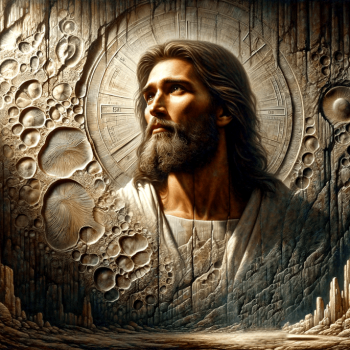
Before leaving Deer Park Buddhist Center behind (see yesterday’s post), I want to tell you some interesting things I learned there about Tibetan prayer flags, those brightly colored squares of cloth that you may have seen tied between trees or strung between the corners of buildings.
I’d never given much thought to those prayer flags before visiting Deer Park, but seeing hundreds of them arrayed around the center’s stupa, or outdoor shrine, made me curious about them. Our guide at the center explained that the symbols and mantras on the flags are meant to broadcast blessings to the surrounding countryside. The slightest movement of the wind carries the prayers far and wide, he said, spreading Buddhist teachings on peace and compassion.
Since coming home I’ve learned more about these flags, which are a distinctive feature of Tibetan Buddhism. They can be traced to the pre-Buddhist traditions of Tibet, when flags were used in shamanistic healing ceremonies and were placed around streams, lakes, and other natural features to appease the local spirits. In Tibetan they are known as Dar Cho: dar meaning to increase life, fortune, and health, and cho meaning all sentient beings.
The flags are primarily for the benefit of the world, not for the individual who hangs them. It is believed that the sacred texts and symbols printed on them have a vibration that is activated and carried by the wind, so that all who are touched by that wind are blessed.
Timothy Clark has an interesting overview of the history and meaning of Tibetan prayer flags here. He describes the flags as “blessings spoken on the breath of nature.” Just as a drop of water can permeate the ocean, prayers dissolved in the wind extend to fill all of space.
While the flags were originally painted by hand, in the 15th century wood-block printing was introduced from China, making it much easier to produce the images. Buddhist masters created designs that were passed down from one generation to the next. When we see a prayer flag, we’re viewing designs that are many hundreds of years old.

The most common image on the flags is the felicitously named Wind Horse or Lung-ta. Known as the “Wish Fulfilling Jewel of Enlightenment,” the wind horse is a mythical animal from pre-Buddhist Tibet, a magical creature that carried prayers from earth to heaven with the speed of the wind and the strength of the horse. Its uplifting energy carries good fortune to all beings. (I can certainly see why one would want to have a Wind Horse around.)
The five colors of the flags are symbolic as well. They are always displayed in the same order and each represents a different element: blue for heaven, white for air, red for fire, green for water, and yellow for earth.
There are special rules for the care of these flags, just as there are for the American flag. Because they contain sacred designs, they are not to touch the ground or floor. When they are hung, one should have beneficial intentions for the world, not just a self-serving intention that the flags will bring one good fortune. After they become old and worn, they should be burned so that the prayers within them can be released and the smoke may carry their blessings to the heavens.
The Tibetan prayer flag tradition is spreading rapidly in the West. My son has a set stretched across his bedroom; my neighbor has one fluttering in his garden. Now that I know a bit more about the tradition behind them, I have a better sense for what is meant to be evoked by these flags. In seeing them, we are reminded to pray for the welfare of all beings and be mindful of the need to be compassionate, kind and joyful.
I’m not sure that the flags work exactly the same in a digital format, but here they are, waving in the wind and broadcasting blessings for you:














